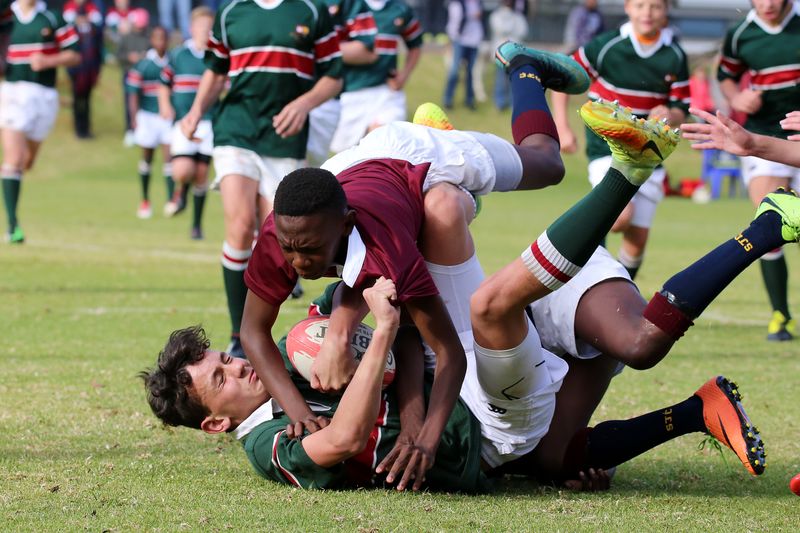Isaah Yeo at centre of concussion controversy in Panthers‘ historic NRL triumph
Introduction
In the aftermath of the Penrith Panthers‘ historic NRL Grand Final victory, questions have emerged surrounding the concussion protocols employed by the league. Many were shocked when Panthers co-captain Isaah Yeo passed his Head Injury Assessment (HIA) after a heavy knock to the head during the match. This incident raises concerns about whether the NRL relaxed its concussion stance for the finals.
The Incident
During the 57th minute of the Grand Final, Yeo was left motionless on the ground after receiving a shoulder-to-head hit from Koby Hetherington while attempting to make a tackle. Yeo’s head also slammed into the ground, causing concern among players and officials. The referee stopped the game, and Yeo was assisted by a trainer before being taken off the field to undergo an HIA.
The Controversy
The controversy surrounding Yeo’s return to the field stems from the severity of the incident and the appearance that he was concussed. Despite the initial concerns, Yeo reportedly passed the HIA after the required 15 minutes off the field. He returned to play and played a crucial role in the Panthers‘ victory. However, this has led to questions regarding the league’s handling of concussion cases, particularly in high-stakes matches like the Grand Final.
Previous Instances
This is not the first time Yeo has been involved in a controversy regarding concussion assessments. In last year’s State of Origin, Yeo received a heavy hit to the head in the opening seconds of Game I. Despite appearing groggy and stumbling, Yeo was deemed fit to continue playing by the NRL’s independent doctor. This incident, along with Yeo’s previous history of concussions, further highlights the need for a thorough evaluation of the NRL’s concussion protocols.
Questions Raised
Yeo’s case is not an isolated incident. In recent years, the NRL has implemented strict concussion protocols to address the serious issue of head injuries in the sport. However, instances like Yeo’s and other players, such as Kalyn Ponga, who has a history of concussions, not undergoing HIAs have raised eyebrows. Ponga’s case, where he was allowed to continue playing despite a high tackle and a violent contact with the ground, has added to the concerns surrounding the NRL’s handling of head injuries.
Editorial and Discussion
The issue of concussion in Rugby League has been a long-standing concern. The NRL has made significant strides in recent years to prioritize player safety and implement stricter protocols for managing head injuries. However, controversies like Yeo’s cast doubt on the effectiveness and consistency of these measures.
Protecting Players
Concussions are serious injuries that can have long-term consequences for an individual’s health and well-being. It is crucial that players are given proper medical attention and assessment to ensure their safety. The NRL has a responsibility to prioritize player welfare and ensure that the strictest protocols are followed to minimize the risk of further harm.
The Impact of Grand Finals
Grand Finals are highly anticipated events that attract a large audience and generate substantial revenue for the NRL. While the importance of the occasion is undeniable, player safety should never be compromised for the sake of entertainment or the magnitude of the event. Allowing players to return to the field without passing a thorough concussion assessment undermines the integrity of the league’s commitment to player welfare and safety.
Consistency and Transparency
To restore confidence in the NRL’s concussion protocols, there needs to be consistency and transparency in the application of these measures. The decision-making process should be based on the well-being of the players rather than external factors. Clear guidelines and assessments must be in place to ensure that players are not unnecessarily put at risk or allowed to continue playing when they are unfit to do so.
Advocating for Change
Fans, stakeholders, and medical professionals must continue to advocate for change in the way concussions are handled in Rugby League. This includes calling for stricter and more comprehensive protocols, independent medical assessments, and increased education and awareness surrounding head injuries. By prioritizing player safety, the NRL can set an example for other sports and protect the well-being of its athletes.
Conclusion
The controversy surrounding Isaah Yeo’s concussion assessment in the NRL Grand Final raises significant concerns about the league’s handling of head injuries. The NRL must address these concerns by ensuring consistent and transparent concussion protocols that prioritize player safety over all other considerations. By doing so, the NRL can send a powerful message about its commitment to the well-being of its players and set a standard for other sports to follow.

<< photo by Patrick Case >>
The image is for illustrative purposes only and does not depict the actual situation.
You might want to read !
- “Enough with the Exemption, Ben Simmons: NBA Great Calls for Accountability”
- “Aussies Put On a Showdown! Australia vs Portugal: Rugby World Cup Clash Revealed”
- “Kevvie’s Passionate Outburst: Broncos’ Performance Ignites Frustration”
- Upton Unleashed: Dally M Champion Inspires Knights to Glorious Triumph
- Blindsided: The Impact of Addo-Carr’s Involvement in the Koori Knockout Brawl
- Broncos Breath Sigh of Relief as Reece Walsh, Adam Reynolds, and Herbie …
- Dreams come true for “super sub” as they embrace the “crazy” journey to victory
- “Australian Football Fans: How to Stream Wolves vs Man City Clash”
- “Pendlebury and Sidebottom Shine as Magpies Triumph: A Display of Team Dominance”
- U2 Ignites the Legend of The Sphere: A Spectacular Opening in Las Vegas
- Unbreakable Bonds: Jarome Luai’s Inspiring Connection to Sea World Chopper Crash Survivor
- Cascading Moves: Jrue Holiday Finds New Home with Celtics Following Lillard Blockbuster




